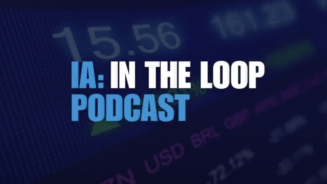Where are you seeing the strongest sales this year in terms of region and products?
We do not operate in other areas of the world, only in the UK, so our sales at the moment are inheritance tax and trust planning, and with clients who are intending to go abroad, and we have seen an uptake on that since the beginning of the year. Discounted gift trusts and loan trusts have sold particularly well.
Are there any areas where sales have fallen this year?
We are seeing far less sales in individual internal funds. Whereas previously maybe people would have invested in internal funds and seen that as doing the job for the client, they are now looking to build portfolios for the clients. Typically, they are using the bond as a wrapper and then building a portfolio of funds within the wrapper or having the funds managed. Portfolio planning has become much more bespoke and, unsurprisingly, our average premium has increased as well.
Have you seen the client profile move more upmarket?
That could be one interpretation, another could be that advisers are using offshore bonds more as a wrapper. Equally, with legislation changes in areas such as pensions, more people are looking at or considering offshore bonds as one of several wrappers.
What types of client does the company target?
We are targeting people approaching or at retirement. More than 720,000 people will reach state retirement age in 2012 and 2013, and 600,000 people will turn 65 each year until at least 2018. Overall, 3.3 million people are poised to hit state pension age in the next five years, according to HSBC and the Office for National Statistics (ONS).
According to the ONS, one in six people in England and Wales is over 65, with growth in the over-90 age group particularly strong. The number of centenarians has risen by two-thirds to 12,640. In mid-2010, more than 18 million people were aged 55-plus, and this figure is projected to rise to almost 25 million by mid-2035.
When you look at that number of people retiring, clearly there is a need for some sort of financial planning wealth management.
Those clients are using the offshore bond as one of a number of wrappers. But, given that other wrappers, such as ISAs, have a minimum amount you can put in, people are increasingly looking at other tax-efficient ways of investing.
Have you noticed any significant trends in terms of underlying fund selection by investors recently?
There are far more advisers managing money on either a discretionary or advisory basis, and they are also looking at ways in which they can improve the overall return for the client.
Given the low-return environment we are in, there has been far more of a focus on the types of fund that are bought. For example, people with fixed-interest funds are increasingly looking at selecting funds that have a gross share class, or where they can have the tax reclaimed from the yield to improve the overall return to the client. From an asset allocation viewpoint, people are gaining more confidence and going back into equities.
Do you expect your distribution model to change in coming years?
The offshore bond seems to be very much a tax wrapper that is advised upon rather than bought directly. So our distribution model
Rather than focus on a particular type of adviser, it is more about dealing with those who have clients who fit with our proposition – holistic financial planners.
naturally focuses on that. But also with the distribution model over the next few years, we would also expect to see more of a focus on providing technical support for advisers and their own advice process, which is becoming more structured.
The adviser market since the Retail Distribution Review seems to be changing. We work with several different types of advisers ranging from those who work in the private banks to those who are sole practitioners.
Rather than us focus on a particular type of adviser, it is more about dealing with those who have clients who fit with our proposition. That type of adviser would be an holistic financial planner, a wealth manager or an adviser in a private bank.
Are you confident that the number of advisers will hold up post-RDR to get the distribution you need?
The number of advisers in that area will remain the same but the organisations may change, through companies being acquired or merged. Therefore, I think the shape of the adviser population will change rather than the actual numbers.
As advisers also segment their client banks, it may be that certain types of clients are then advised by other advisers. We will be dealing with specialist firms that are fewer in number as well as larger firms and medium-sized firms who have decided to have an adviser who specialises in one type of advice.
How are the growing regulations in financial services shaping your company’s sales trends?
IFAs have been holding back as they deal with the RDR regulations, although they are clear that IHT is an area where they can provide advice.
What RDR has done is throw up some questions about how adviser charging applies to trusts. The questions we are seeing there is how should advisers deal with the different entities of the trust, such as the settlor, the trustee and the beneficiaries, what advice they should provide them and, specifically, how they should document that advice to ensure they avoid some of the pitfalls of trust planning, which, at worst, potentially leads to tax charges.
The regulations have also made the whole advice process more structured, placing a lot more attention on due diligence. We have found it is important to deal with each area of the process, as well as to understand the due diligence an adviser has to go through to be able to secure a position on a best advice panel, for example.
How does Aegon UK liaise with the parent structure?
Aegon UK works with Aegon Ireland to distribute the products that are developed in Dublin. We have a wealth management sales team in the UK for offshore bonds with three development executives and myself.
We are integrated with the Aegon UK marketing team and they provide product development and marketing material. We are constantly working with them to monitor market trends and that has been particularly prevalent over the first quarter as we have seen the RDR impact on advisers.
Advisers have been enquiring about how adviser charging works on products and we have been able to pick up trends there and develop material that helps them to advise clients. We have also been proactive in designing and implementing features on the trust product that can fit with the post-RDR world.
How does your company differentiate itself from its competitors?
Partly on the service we provide, through specific areas such as offering certainty for clients going abroad, support that has a lot of depth so an adviser can maintain contact with their client. Since the RDR, it is now also about being able to facilitate a wide variety of options for the adviser, to allow them to give advice to clients and also to be remunerated in a way that is consistent with how they are advising the client.
The clarity in the market about the different options available is not quite there yet and what we are trying to do is to offer a wide variety, particularly with trust planning. For example, we are giving advisers the choice of charging for the different entities within the trust, the settlor, trustees and also for the beneficiaries. I am not sure that our competitors do that to the same extent.
Do you plan to target any new markets geographically?
We are continually looking at market trends in the market and intend to review our IHT trust options. We are reviewing the legislation in Europe to ensure the bond remains tax-compliant in the jurisdictions we support.
Those jurisdictions are France, Italy and Spain, which is where the end clients would be travelling to. They would be clients who are either UK residents intending to travel to France Italy or Spain, or could be French, Italian or Spanish individuals who come to this country to live – something we are seeing more of.
Looking ahead, what are the company’s priorities?
Our priorities are what we call ‘at retirement’, focusing on people who are retiring as well as work-placed savings. One of the areas that has grown rapidly during the first quarter of this year is our platform, Aegon Retirement Choices. The offshore bond is one of a number of wrappers on that platform, as well as another product called ‘One Retirement’.





